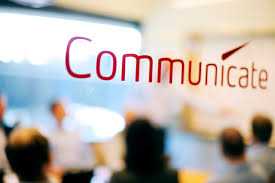Communicate and work in health or community services
In your own words, answer the following questions. To be marked as competent in this unit, you must provide sufficient responses to each question. Bullet points must only be used where applicable e.g.: if the question asks you to list, name or give examples.
CHCCOM005 Communicate & Work In Health or community services Assignment-Traning A Joint Initiative Australia.

Questions
1.How will you refer issues that impact on employee, employer and/or client rights and responsibilities?
As a worker, it is our responsibility to read the workplace safety and health poster at the job site.Follow all lawful employer safety and health rules and regulations, and wear or use required protective equipment while working. Report hazardous conditions to the employer.Refer issues verbally or in written statement to the supervisor/manager with higher level of responsibilities.If workers feel that they, or their clients, are not able to achieve their rights and responsibilities they should discuss these with their supervisor or with a more experienced colleague.
2.Give examples of workplace documents that relate to your role. How would you clarify an understanding of these documents with your supervisor?
3.What organisation communication policies and procedures will you need to follow for using digital media in health care?
Many workplaces have policies and procedures about the responsible use of information technology (IT) including digital media. Policies and procedures are written to help organisations meet their legal obligations by interpreting relevant laws and then setting out how these will be met in the workplace.
Workplace policy on the use of technology and social media is often explained during induction but if workers have any questions about the policy, they should ask their supervisor or a more experienced worker.Worker should always check the workplace policy on the use of technology and social media so they can use them responsibly in the workplace and avoid breaking the law or losing their job.
4.Briefly explain how the following characteristics can effect communication: a. Language b.Culture c. Religion d. Emotional state e. Disability f. Age
a. Communication becomes difficult in situations where people don’t understand each other’s’ language. The inability to communicate using a language is known as language barrier to communication. … Not using the words that other person understands makes the communication ineffective and prevents message from being conveyed.
b. Cultural differences cause behaviours and personality differences like body language, thinking, communication, manners, norms, etc. which leads to miscommunication. … Every action is influenced by culture like ambitions, careers, interests, values, etc. Beliefs are also another cause for cultural barrier.
c. One main communication barrier stemming from religion is individuals’ lack of knowledge or information about other religions and belief systems. … These beliefs, or discrepancy between beliefs, can impact how people communicate with one another.
d. Religion can influence the culture of an entire community, nation, or region of the world.This goes beyond a person’s individual habits to affect much bigger issues, such as how the government is run and what artistic and scientific advances are made.
e. Emotional barriers to communication are usually due to a lack of emotional awareness or control,often referred to as emotional intelligence. Feelings play a big role in communication. Emotional awareness, or the ability to understand feelings, will help you succeed when communicating with other people. You will notice the emotions of other people, and how the way they are feeling influences the way they communicate. People with intellectual disabilities or those whose disabilities directly affect speech, hearing, or sight are more likely to have communication difficulties.
f. It is certainly true that age will play a role in some communication problems between people, and that age has an effect in conjunction with other factors that overlap and interact. A younger person may be less inclined to be assertive when speaking with an older person, but that might also be due to their culture. With typical aging, communication skills change subtly at least in part because of changes in physical health, depression, and cognitive decline. Aging is responsible for physiologic changes in hearing, voice, and speech processes.
5.Who could you seek feedback and advice from on areas for skill and knowledge development?
You can ask for feedback from your manager/supervisor or colleagues at any time: Let the other person know you would like feedback so that they have time to prepare. You can help the other person prepare by being specific about what you would like feedback on. Just ask your boss for feedback. Ask colleagues, junior staff, and clients as well.
CHCCOM005 Communicate & Work In Health or community services Assignment-Traning A Joint Initiative Australia.

Supervisors, workplace trainers, and more experience colleagues can help workers to identify areas for skills and knowledge development. Supervisors and team leaders can give workers feedback on their learning needs.Workplace trainers can also help workers to identify areas for skills and knowledge development Colleagues and team members are helpful because they know the skills and knowledge that help them in their jobs.
6.Explain how the following digital media could be used in the community services and health sector: a. Web b. Email c. Social media d. Podcast and videos e. Tablets and applications f. Newsletters and broadcasts g. Intranet
c. Many organisations use social media as a way to communicate information to staff, clients and other service providers in a timely and cost-effective way.
7.Explain the principles of effective communication, including models, and types?
Exchange information successfully between two or more people. You can communicate verbally or non-verbally or a written information. Verbally: – speak clearly and directly; non-verbally: – eyes movement, touching,: -Body movement- thumps up means everything is ok; Facial expression – happy or sad;:- Tone of voice – high or low, loud or soft, fast or slow,:- Rate of speech – how quickly or slowly a person speak and Personal space:- amount of space or distance people need around them to feel comfortable. Be open-minded and demonstrate a willingness to listen. Have a respectful attitude and be supportive.
8.Briefly explain the following different models to support optimum client a. Principles of rights-based service delivery b. Different roles and responsibilities of team c. Characteristics of multi-disciplinary teams and how they are used d. Role of support services e. Funding environment
9.Explain the following communication techniques: a. Open ended questions, affirmations and reflections b. Difference between motivation interviewing and coercive approach c. Difference between collaboration and confrontation.
Open-ended questions encourage people to give detailed answers that provide a lot of information to refer to and build on during the conversation;Affirmations are positive statements intended to provide encouragement, emotional support or motivation;
Reflections or reflective listening is when workers listen to get an understanding of a client’s issues and ideas, and then they repeat the information back to the client in their own words to check the worker has understood the issue correctly.
b. Motivational interviewing asks open-ended questions, which help the individual identify why they want to change their own behaviour.
A coercive approach involves forcing a person to do something, such as change a behaviour.
c. Collaboration – build rapport and trust between workers and clients because clients recognise that workers are genuinely trying to help them and to work together to produce something. Confrontation is when two parties/groups come face to face in some dispute/argument/conflict…Confrontation and collaboration exist totally opposite within thought processes toward mutual understanding.
10.Briefly explain the following legal and ethical considerations in relation to communication: d.Discrimination e. Duty of care f. Mandatory reporting g. Translation h. Informed consent i. Work role boundaries – responsibilities and limitations j. Child protection across all health and community services contexts, including duty of care when child is not the client, indicators of risk and adult disclosure.
d. Under discrimination law, it is unlawful to treat a person less favourably on the basis of particular protected attributes such as a person’s sex, race, disability or age. Treating a person less favourably can include harassing or bullying a person.
National and state/territory equal opportunity and anti-discrimination laws require employer to take all reasonable steps.This involves treating people fairly and equitably Commonwealth and state/territory laws determine that people cannot be discriminated against based on assessment of their race, nationality, gender,sexual preference, religion, skin colour, political opinion, ect.
e. Duty of Care requires us to ensure that all the people we work with are safe and that we abide by relevant legislation. … Duty of Care is the legal duty to take reasonable care so that others aren’t harmed and involves identifying risks and taking reasonable care in your response to these risks.
f. Duty of care is the legal obligation of a worker or organisation to conform to a certain standard of conduct for the protection of others against an unreasonable risk of harm while they are:
1.In the care of the worker or organisation
2.Using the services of the organisation
3.Exposed to the activities of the worker or organisation
Failure to exercise due care may lead to foreseeable harm or injury (in other words it could have been avoided with due care taken). If workers’ actions do not meet this standard of care, then the acts are considered negligent, and any damages resulting could be claimed in a lawsuit for negligence.
i. Professional boundaries are limits that define effective and appropriate interaction between community service and health workers and their clients. Boundaries exit to protect both workers and clients.
Examples of professional boundaries include:
Do not give clients money from your own wallet
Always behave professionally and according to the organisation’s code of ethics
Avoid disclosing information about own personal life/circumstances
Assist clients to achieve their goals through guidance and encouragement rather than by doing all the work for them.
j. Under health and safety legislation both employers and employees have responsibility for health and safety in the workplace. Employers have the ultimate responsibility and a duty of care to ensure the health and safety of the workers and anyone else who might be affected by the work activity.
Employers must ensure that:
The workplace is safe
There are safe systems of work
Machinery, equipment, tools and substances are in a safe conditions
Information, instruction and training on health and safety is provided to workers
Supervision is provided
Employees are responsible for doing everything reasonably possible to protect their own health and safety and that of others including:
Following all reasonable instructions
Not putting other workers or members of the public at risk of injury or illness
Using any protective equipment that is provided
Not working under the influence of drugs (including medication) or alcohol.
Requires specific people or professionals to report any suspicion of abuse or neglect of young children to child protection agencies. Mandatory reporting laws are not the same each state/territory but the main differences concern who has to report and what types of abuse and neglect have to be reported.
For example, when interacting with clients and colleagues staff must:
Act with impartiality, courtesy, promptness and fairness
Respect the rights and dignity of client and community members
Respect other staff in their dealing with them
Not discriminate against, bully or harass any person in their dealings with them
Give full information clearly, simply and in the most appropriate form
Maintain confidentiality and privacy
Manage work and personal relationships so that professional boundaries are maintained
Declare any conflicts or potential conflicts of interest between their professional and personal interests to their manager or other appropriate person.
To be marked competent in this unit, students must respond to all points in the project. Answers must be comprehensive, detailed, demonstrate appropriate research procedures and be supported by suitable references.
Scenario 1:
There has been a miscommunication in regards to the way large mobility equipment is stored. Your coworker says that equipment is to be stored in the hall, and someone else tells you that it is to be stored in an old lounge room. You would like to document and communicate this procedure more effectively so that there is no more confusion.
1.How will you use verbal and non-verbal communication to enhance understanding and demonstrate respect in this situation?
2.How will you listen to requests, clarify meaning and respond appropriately?
3.Explain how you will listen to, clarify and agree timeframes for carrying out these workplace instructions.
4.You have found that leaving the mobility equipment in the hallway poses a risk as you have almost tripped over the equipment a few times. Fill out the hazard report form on the last page of this assessment book.
You are working with a client who mobilises with supervision. You notice that there is a 4-wheeled walker in his room. You talk to a co-worker and they mentioned that the client’s mobility plan had changed, but no one has mentioned this to you.
1.It is found that the physiotherapy service has failed to communicate this change to staff. What are the lines of communication between organisation and other services?
2.You are required to complete the progress notes in the client’s file. Write out exactly what you would say in the progress notes. Include important requirements, such as time, date, your name and your role in the table below:
3.How will you contribute to voicing these types of improvements in work practices? Explain this in a way that promotes and models changes in accordance with organisation requirements.
CHCCOM005 Communicate & Work In Health or community Assignment
Scenario 3:
You enter a client’s room without personal protective equipment (PPE). After leaving the room, a coworker tells you that the client has an infection that requires contact precautions. You noticed that there was no sign to advise you of these precautions.
1.Why is it important that you exchange the information in a timely manner?
a. The way in which you handle and pass on a person’s information will have a direct impact on access and quality of care. It is therefore important that you are able to exchange information in a timely manner that complies with the confidentiality procedures of your workplace. … information about individual needs.
2.You mention this issue to the health care worker that set up the contact precautions room. The health care worker has not taken the issue seriously, saying that everyone should read the clients medical record first. You have been told that appropriate signage is required for contact precaution rooms too. How could this turn into a potentially complicated or difficult situation, and how would you report this?
3.After dealing with the matter appropriately, conflict has arisen from the co-worker, saying that you “dobbed them in.” How will you refer unresolved conflict situations to supervisor?
CHCCOM005 Communicate & Work In Health or community Assignment
4.How would you resolve using appropriate communication strategies and techniques to avoid,defuse and resolve conflict situations?
Conduct interactions with clients in a fair, just, humane and positive manner by showing people that we are interested in them and what they have to say is crucial to the listening process. It is no good hearing and understanding what someone is saying if we don’t let them know through our behaviour that we are really listening to them.
CHCCOM005 Communicate & Work In Health or community services Assignment-Traning A Joint Initiative Australia.

You need to ensure physical barriers to effective communication are removed by freeing the environment of distractions and noise. For example, try to provide a quiet, private space away from other noises. This is important because standing, while the person you are talking with is sitting, can intimidate them—as you can be seen as imposing your authority over him or her. The role of community services workers is not (usually) to impose decisions on a client, but rather to listen to their stories and work with them to find the best solutions to their situations.
Sit facing your client, leaving room to manoeuvre—as facing the client indicates that you are there,ready to listen to them. Leaving room to manoeuvre gives them a feeling of space.
Eye contact is perhaps the most powerful way of demonstrating that we are listening and interested in what someone is saying. To facilitate good eye contact, you should make sure you are sitting on similar chairs that help you to be at the same eye level as your client. Again, how you sit conveys a message about how interested you are in someone. If you have a relaxed and open posture, you are showing someone that you are ready to listen
Being warm and welcoming is another way to show interest in a client. Using their name, smiling when you greet them and offering them a seat are great ways to set the scene of warmth, positive regard and interest. Using correct facial expressions is a way of tuning in to the client’s feelings and showing them, you’re tuned in.
In the early stages of developing rapport with a client, it’s best to keep your talking to a minimum and let the client express what the problem is or why they have come to you for assistance. Use non- coercive icebreakers for example, ‘Hi, I’m Raymond and I’m one of the community service workers here … how can I help you?’
CHCCOM005 Communicate & Work In Health or community services Assignment-Traning A Joint Initiative Australia.

Use silence positively and don’t rush. People are often upset, anxious or distressed in some way when they have come to us for help and the best thing, we can do for them is give them time. If we rush them, this will only escalate the distress.
5.You have found that further training would have prevented this issue from occurring. How will you consult your manager and initiate action in regards to some options for accessing skill development opportunities?
CHCCOM005 Communicate & Work In Health or community services Assignment-Traning A Joint Initiative Australia.



